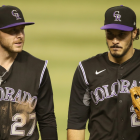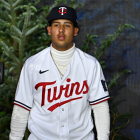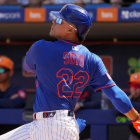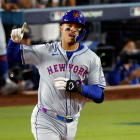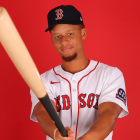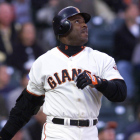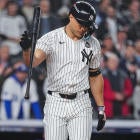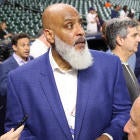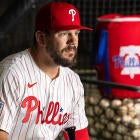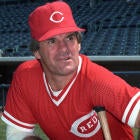
Blake Snell. Yu Darvish. Francisco Lindor. Carlos Carrasco. The past few weeks have seen each of those players, responsible for a combined nine All-Star Game appearances, traded elsewhere as part of multi-player swaps. It's been a relatively uncertain time to be a baseball star making decent money, and that doesn't seem likely to change just yet.
The odds are in favor of more star-laden trades occurring between now and Opening Day. Just who might be on the move, and who are some long shots to keep in mind? Below, we've identified five "favorites" and five "dark horses" to keep on your wishlist. The difference between those groups is straightforward: the favorites appear to have a better than average chance of changing teams, while the dark horses are more remote.
(Do note that the players are presented in alphabetical order -- except for when they've been paired to reduce the narrative burden -- and that this exercise is, like psychic readings, is largely for entertainment purposes.)
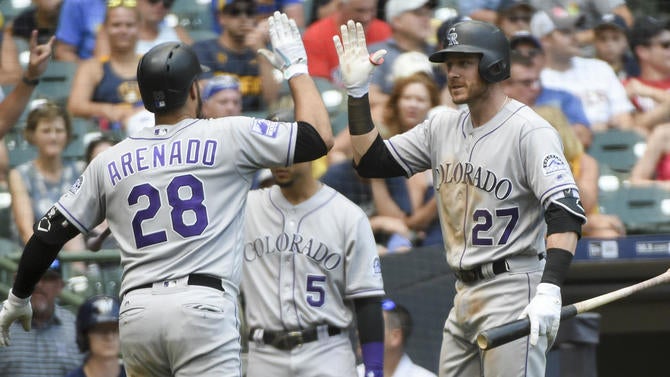
The Favorites
1. Nolan Arenado, third baseman, Colorado Rockies
This is going to be familiar to anyone who kept up with the Nolan Arenado trade rumors last offseason, but the rub here is simple: he's owed $35 million this upcoming season, after which he can opt-out from the $164 million remaining on his deal. That dynamic, installed at general manager Jeff Bridich's behest, puts teams in an uncomfortable position: if they trade for Arenado, are they going to get less than they bargained for?
The risk of Arenado opting out has been tapered by his subpar 2020 and the impact the pandemic is likely to have over the next few offseasons. But unless a team is able to convince Arenado to waive his opt-out rights beforehand, there's still going to be a chance that he bolts -- if only to have some say in where he lives and plays.
The Rockies were said to be serious about moving Arenado entering the winter, but it's unclear if they've been able to make any meaningful progress in their efforts.
2. Kris Bryant, third baseman, Chicago Cubs
3. Willson Contreras, catcher, Chicago Cubs
Again, this is going to read like it's a copy-and-paste job from last winter, but the Cubs didn't trade Kris Bryant then and they're left trying to move him now. Bryant is similar to Arenado in that he's coming off a down season. The difference is that Bryant will cost a little less than half what Arenado will in 2021, and that there's no doubt about when he'll qualify for free agency: it'll be next winter, barring an extension agreement.
In theory, Willson Contreras should be in higher demand. His framing metrics have improved over the past season-plus, and he's remained an above-average hitter who has a feel for hard contact and a willingness to walk. Factor in how he has two years of team control remaining, and he's going to make a nice consolation prize for whichever team abandons the J.T. Realmuto sweepstakes to ensure they get an above-average backstop.
4. Joey Gallo, right fielder, Texas Rangers
The Rangers initially put Joey Gallo on the trading block last summer, and it stands to reason he'll get moved at some point over the next six to 12 months. He has just two years of team control remaining, an escalating arbitration bill, and a risky long-term outlook that doesn't make him a sensible extension candidate for the Rangers.
Gallo is a quality athlete who can move around the diamond a little, and there's no doubt that he can hit the ectoplasm out of a baseball. He's comically prone to striking out and popping up, however, and it's fair to have concerns about his ability to stay afloat as he moves closer to 30 and further from peak bat speed.
For whatever it's worth, a contender looking at Gallo's Statcast data might be heartened to learn that Texas' new ballpark seemed to suppress his power output. Baseball Savant's calculations had Gallo finishing with four more home runs if he had produced the same batted-ball profile with the Astros or Phillies, three more with the Red Sox, and two more with the Brewers and Nationals. Does any of that actually matter? Shrug.
5. Trevor Story, shortstop, Colorado Rockies
Arenado receives most of the attention, so far as Rockies trade targets go, but Trevor Story would appear to have the greater trade value. No shortstop has accumulated more Wins Above Replacement over the last three years, and he's now entering his walk year.
The Rockies have made a habit out of extending their better players right before the clock strikes midnight on their team control -- Arenado and Charlie Blackmon included -- but they should be revisiting their calculations after the weak return on Lindor. The Rockies might entertain an idyllic scenario where they trade Arenado and then redirect the freed-up funds to Story, but that's going to require some Sorkinesque acrobatics. The more likely outcome would seem to entail Colorado moving both and starting anew.
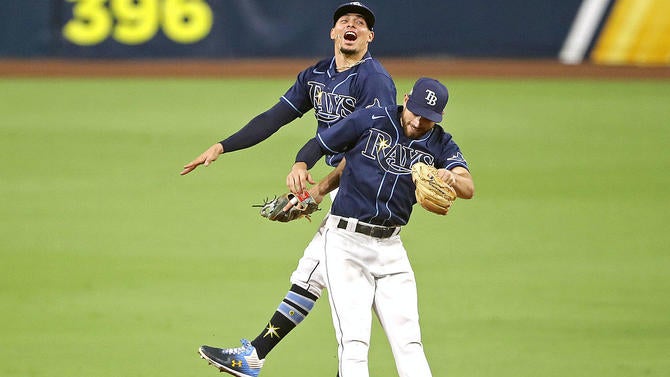
The Dark Horses
1. Willy Adames, shortstop, Tampa Bay Rays
The Rays have a number of quality infield prospects nearing their arrival in St. Pete: Wander Franco, Vidal Brujan, Taylor Walls. Sooner than later, they're going to have to create space at the big-league level. That's why Willy Adames' situation is worth monitoring. (Ditto for Brandon Lowe's, who has other factors working toward a deal.)
As the Snell trade indicates, the Rays prioritize maximizing their return. Adames, who just missed out on Super Two status this winter, will enter the arbitration stage of his career after next season. That, plus the presence of Franco and Walls, points toward Adames being dealt over the next 12 months. The Rays might even want to accelerate that timeline as a means of undercutting a soon to be oversaturated shortstop market.
Next year's free-agent class is projected to include Lindor, Javier Baez, Carlos Correa, Corey Seager, and Story. The odds are one or two of those players will re-sign before they reach that point (Lindor and Seager, maybe), reducing the class's star power. Regardless, the Rays can offer teams a chance to save some coin and heartache by focusing their energy instead on acquiring Adames at the deadline or early next winter.
2. Shane Bieber, right-handed starter, Cleveland
3. Jose Ramirez, third baseman, Cleveland
Although Cleveland just closed the book on the Lindor era, it isn't far off from having to make similarly difficult decisions relating to Shane Bieber and Jose Ramirez.
Bieber will enter the arbitration phase of his career next winter, having missed out on achieving Super Two status by about a month. Without Lindor and Carrasco on the books, the Fightin' Franconas should be able to keep him around in the near term. As for the long term, Cleveland has to figure out the sweet spot between maximizing their return and maximizing their competitive aspirations. This is a tricky dance with hitters, and an inherently more difficult one to get right with pitchers and their elevated injury risk.
Comparatively, Ramirez's situation is more straightforward. He'll enter the club-option phase of his extension after the upcoming season. At that point, he'll be owed $24 million through 2023. If Cleveland wants to improve upon the Lindor return, it might have no choice but to pursue a trade heading into the 2022 season.
4. Matt Chapman, third baseman, Oakland Athletics
The Athletics would seem to have balance similar considerations with Matt Chapman, who'll qualify for free agency after the 2023 season. It's more complicated than that, however, for two main reasons: 1) the A's no longer receive revenue-sharing funds, ostensibly lowering their payroll ceiling; and 2) the synced-up nature of their core.
The A's will shed Khris Davis' contract after next season, with Mark Canha following him out the door to free agency. Those exits will create around $23 million in savings, but much of that excess is going to be devoured by arb-level raises. Chapman, Matt Olson, and Frankie Montas are each in their first year of eligibility, while Sean Manaea and Chris Bassitt are steps ahead and Ramon Laureano is a step back.
It's just a math problem from there, and that math is going to become difficult sooner than later if the A's are unable to field payrolls above the $60-to-$70-million range.
5. Ketel Marte, second baseman/center fielder, Arizona Diamondbacks
You have to feel a little for the Diamondbacks, who are now trapped in the same division as arguably the two best teams in the National League. What's Mike Hazen to do? Presumably inch closer to a rebuild, which will almost certainly include a David Peralta trade. Zac Gallen and Ketel Marte are less likely to go, but it wouldn't hurt Hazen to gauge the return on one of the worst contracts in baseball (from a labor perspective).
Ketel Marte signed a five-year pact worth $24 million prior to the onset of the 2018 season. He's since accumulated 12.7 Wins Above Replacement by hitting .294/.356/.502 (122 OPS+) and flipping between second base and center field. His contract is about as failsafe as they come. If he craters (and there's no indication he will), he'll make $16.8 million over the next two years. If he keeps playing like a star, his employer can exercise a pair of team options for the near-criminal price of an additional $16 million.
Marte's versatility makes him a fit on any roster, and his contract makes him a fit on any ledger. If Hazen puts him out there -- and he'd be justified in not doing so -- he could ask for a king's ransom, and he would be in a good position to receive it.
![[object Object] Logo](https://sportshub.cbsistatic.com/i/2020/04/22/e9ceb731-8b3f-4c60-98fe-090ab66a2997/screen-shot-2020-04-22-at-11-04-56-am.png)








